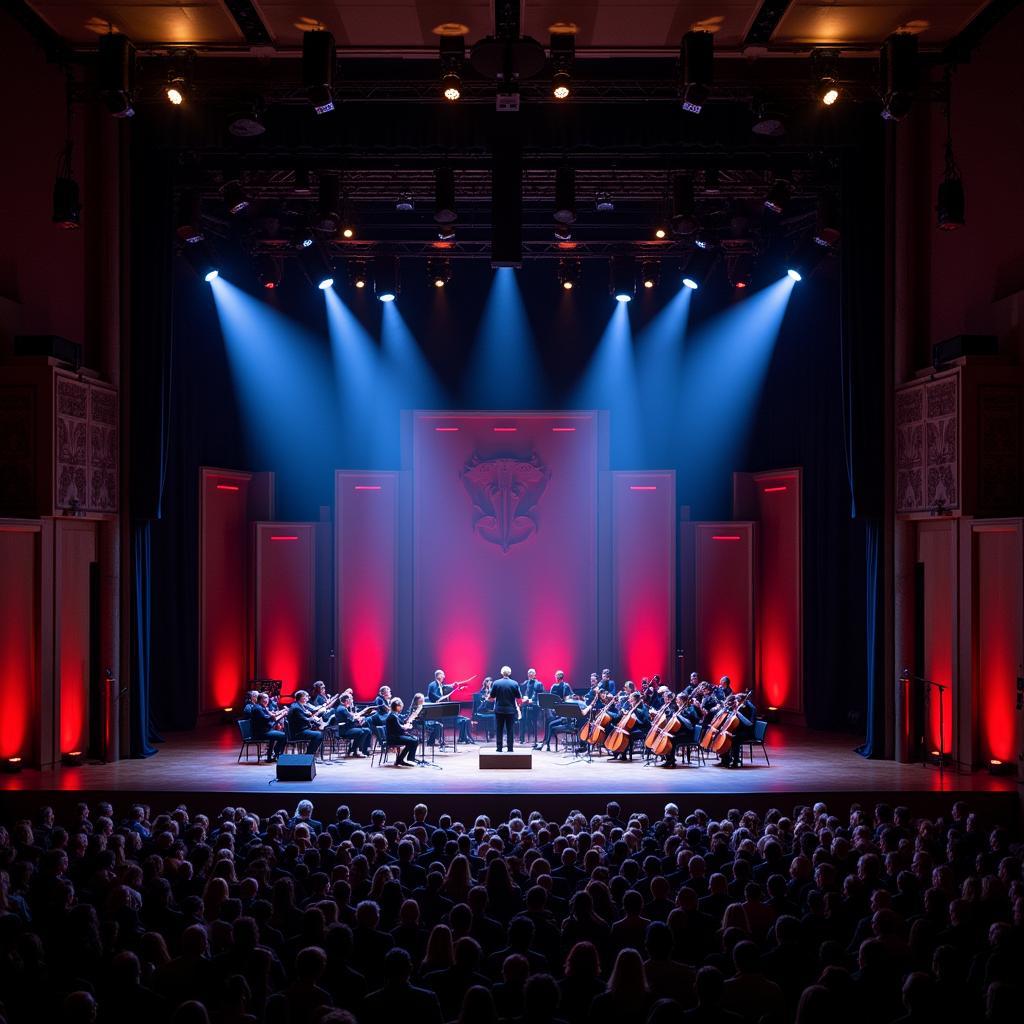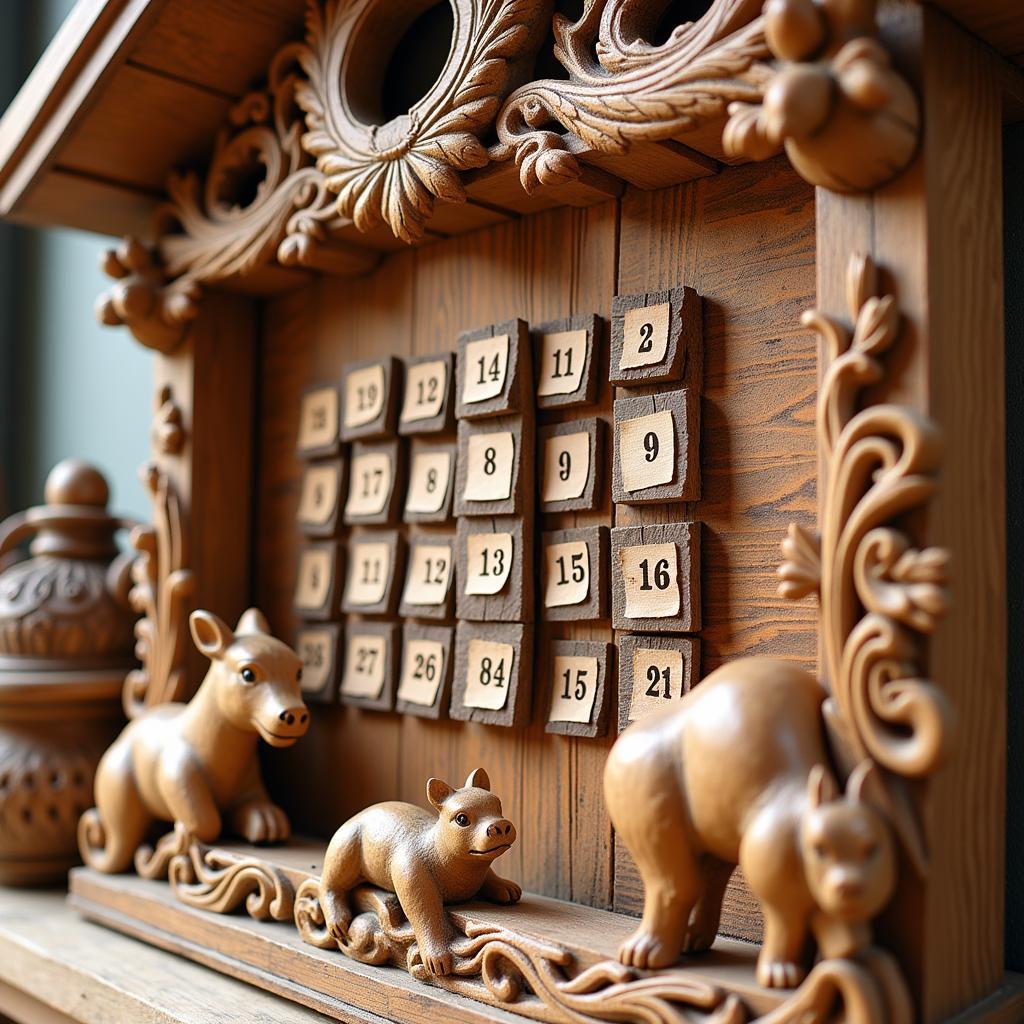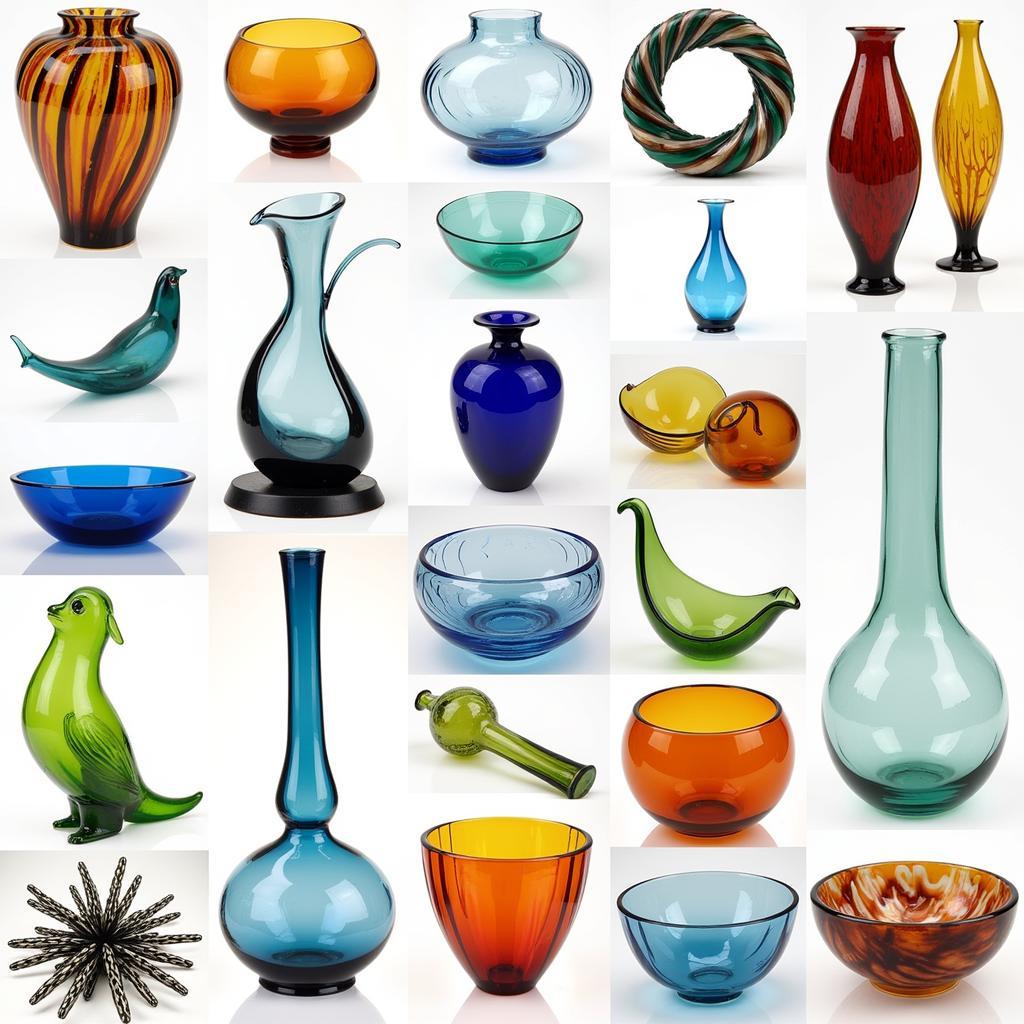Art Nouveau Statues: Embracing the Beauty of Nature’s Flow
Art Nouveau Statues, with their sinuous lines and organic forms, transport us to a world where art and nature intertwine. Emerging in the late 19th century, this revolutionary art movement embraced the beauty of the natural world, rejecting the rigidity of traditional artistic styles. From the flowing hair of a maiden to the delicate curves of a flower, Art Nouveau sculptures capture the essence of nature’s grace and dynamism.
The Essence of Art Nouveau Statues
Art Nouveau, meaning “New Art” in French, was a celebration of innovation and modernity. Artists sought inspiration in the flowing lines of plants, the intricate patterns of insects, and the graceful movements of animals. Unlike the static poses and idealized forms of classical sculpture, Art Nouveau embraced asymmetry, dynamism, and the beauty found in the everyday.
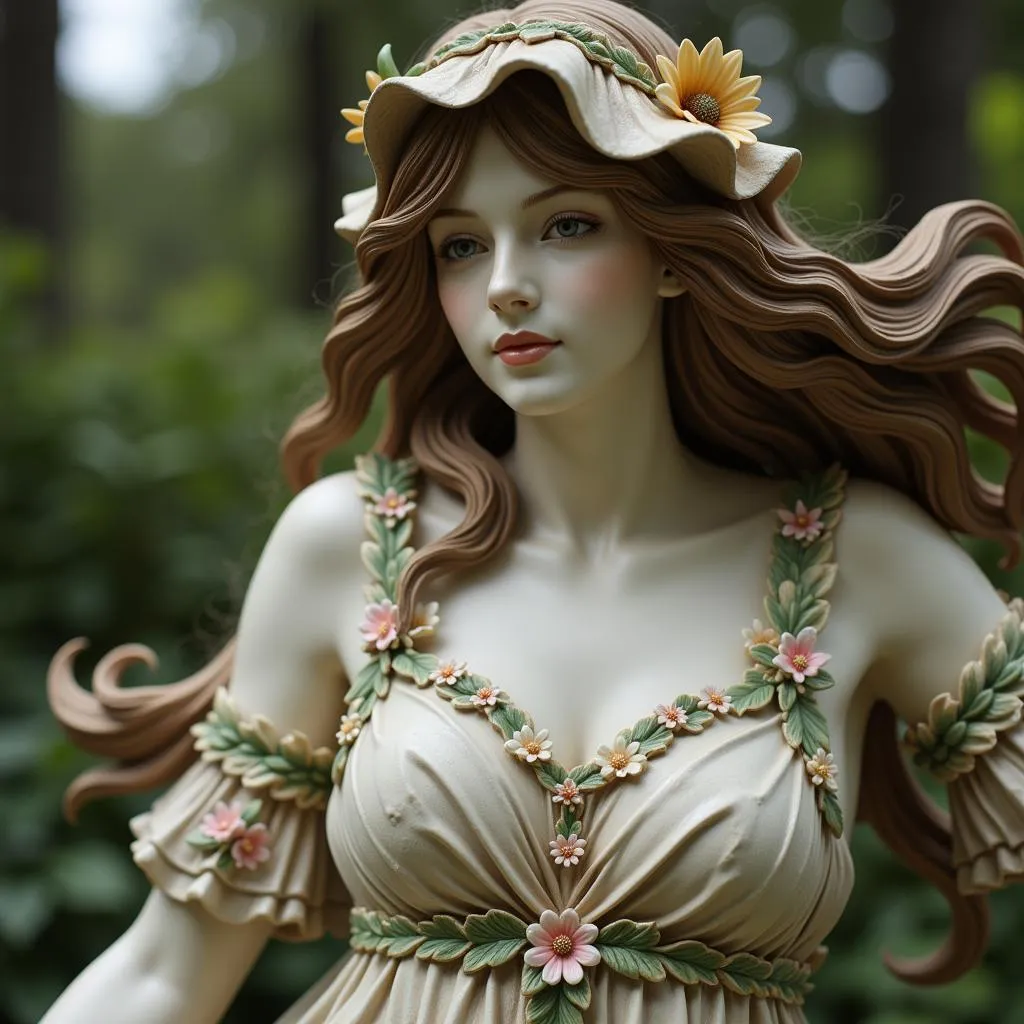 Art Nouveau statue of a woman
Art Nouveau statue of a woman
Key Characteristics of Art Nouveau Sculpture
Several defining characteristics set Art Nouveau statues apart:
- Organic Forms: Sinuous curves, flowing lines, and whiplash motifs dominate, mimicking the natural world’s growth and movement.
- Nature-Inspired Motifs: Flora and fauna take center stage, often interwoven with the human form or serving as standalone subjects.
- Exquisite Detail: Intricate carvings, delicate textures, and meticulous attention to detail elevate each piece to a work of fine art.
- Innovative Materials: While bronze remained popular, artists explored new materials like glass, ceramics, and wrought iron, expanding the possibilities of sculptural expression.
Iconic Art Nouveau Sculptors and their Masterpieces
The Art Nouveau movement captivated artists across Europe and beyond, each leaving their unique mark on this captivating style.
- Auguste Rodin (France): Although not strictly an Art Nouveau artist, Rodin’s expressive sculptures, like “The Kiss,” embody the movement’s embrace of emotion and sensuality.
- René Lalique (France): A master glassmaker, Lalique’s delicate and ethereal sculptures, often featuring female figures and floral motifs, epitomize Art Nouveau elegance.
- Antoni Gaudí (Spain): Known for his architectural masterpieces, Gaudí also created stunning sculptures, like those adorning Barcelona’s Park Güell, blending nature and fantasy seamlessly.
The Enduring Legacy of Art Nouveau Statues
Although the Art Nouveau movement was relatively short-lived, peaking in popularity from the 1890s to the 1910s, its impact on art and design remains profound.
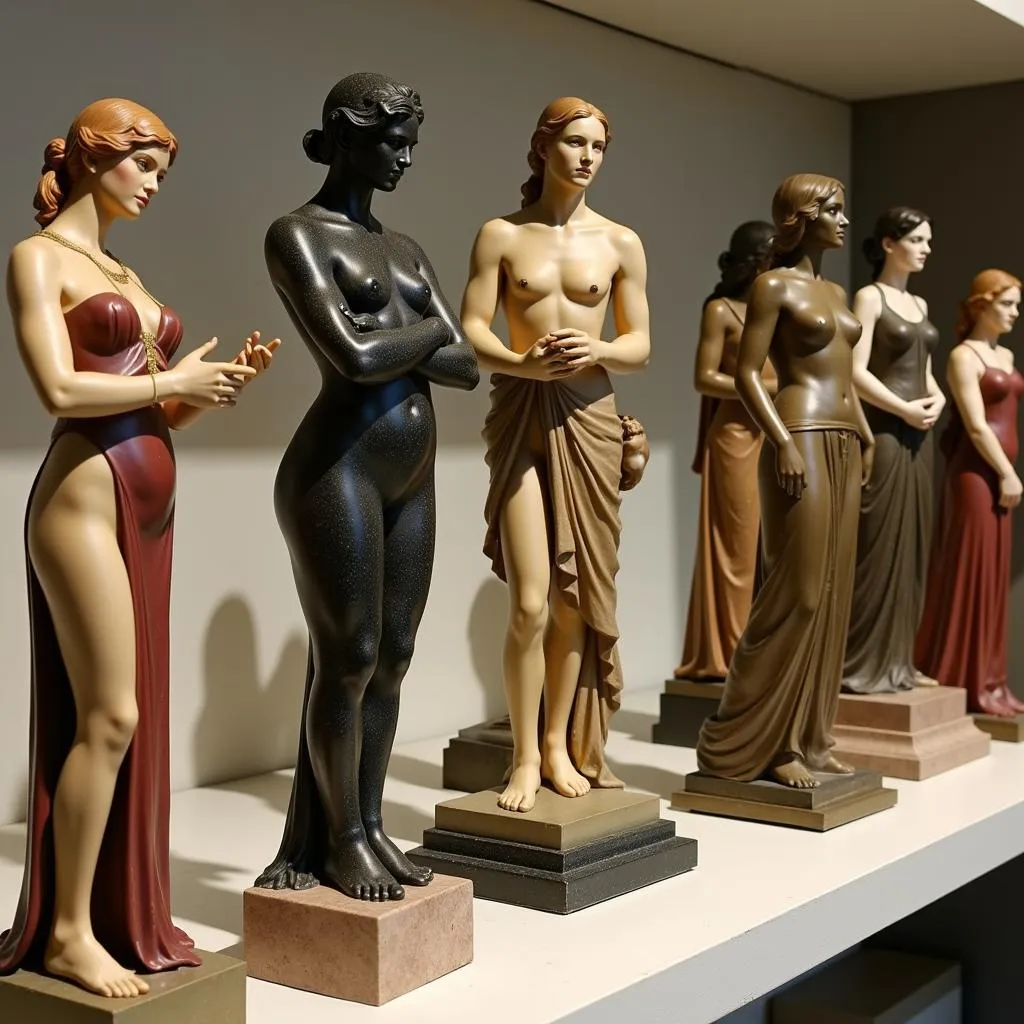 Collection of small Art Nouveau statues
Collection of small Art Nouveau statues
Today, Art Nouveau statues continue to enchant and inspire, reminding us of the beauty found in nature’s embrace and the power of artistic innovation. Their enduring legacy can be seen in contemporary art, design, and architecture, proving that the allure of Art Nouveau continues to captivate generations.
